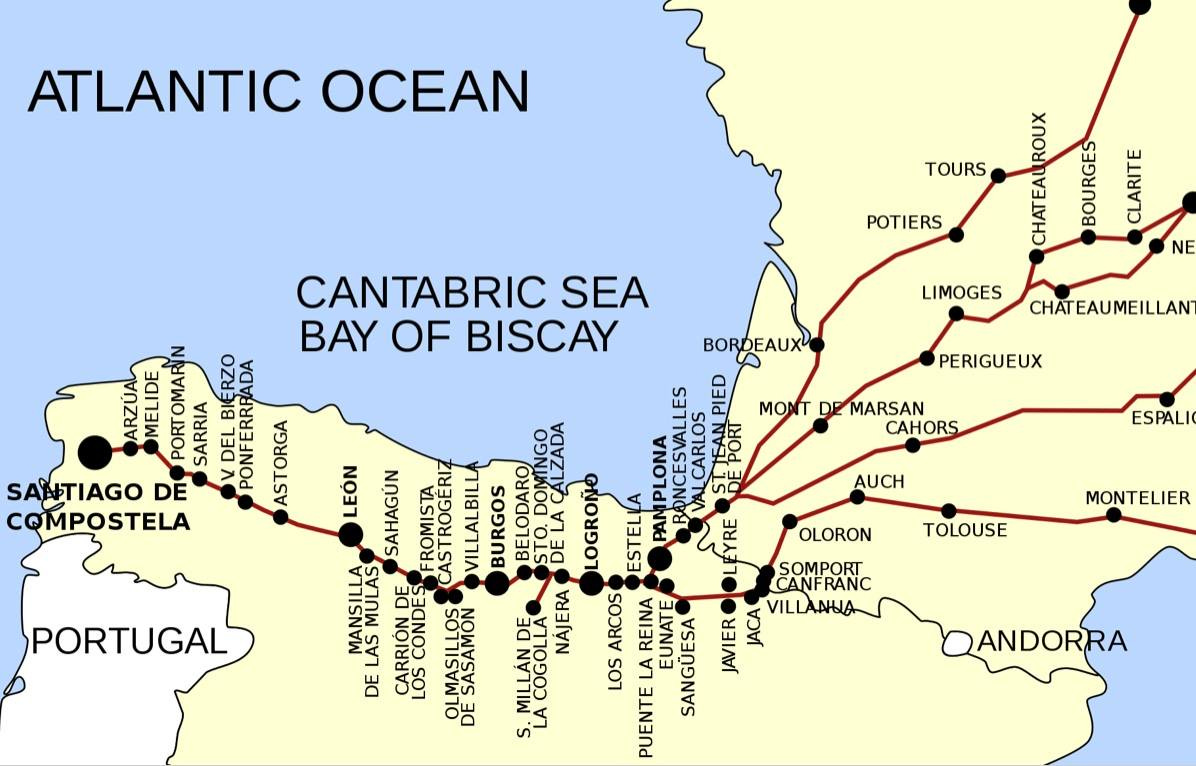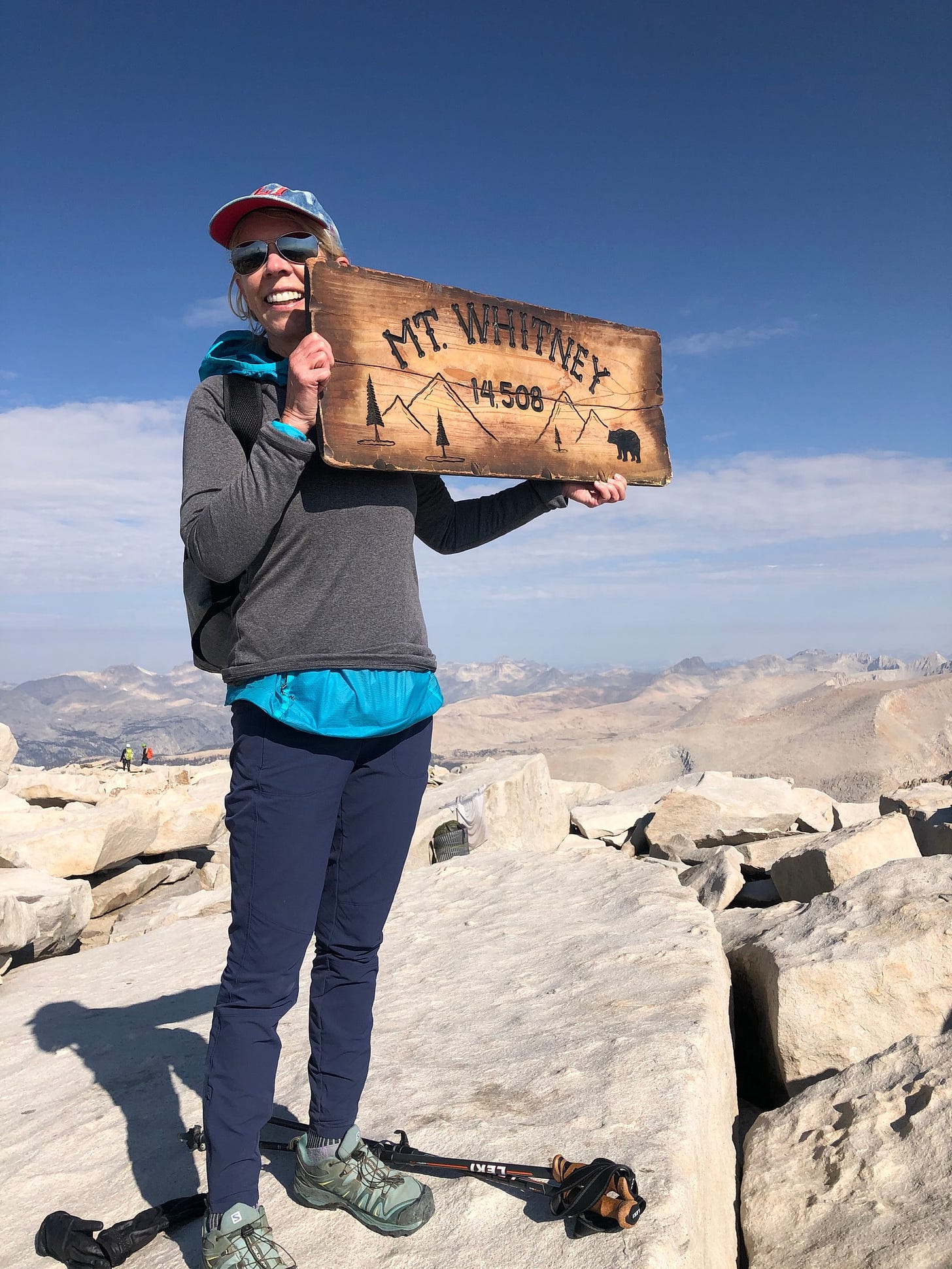
This is a personal Wells $treet.
For my copyrighted/patented/trademarked™️ snarky coverage of business news, check out my homepage, and subscribe. It’s free!
🥾🥾🥾🥾🥾
By the time you read this, I’ll be sleeping. Snoring, most likely. I will have completed the first day of what’s expected to be a very long journey.
I’m walking the Camino de Santiago, a 500-mile trek starting in the south of France. God willing, I’ll arrive in the town of Santiago de Compostela in northwest Spain by the end of June.
This first day may be the hardest, nearly 20 miles long and ascending 4,000 feet in elevation. I wasn’t able to find a room ahead of time at the preferred stop for my first night — Roncesvalles, Spain — so I’m trekking another four miles to the village of Espinal.
Or that’s the plan.

Somewhere along The Camino/Alberto Rot Albarca/Getty Images
What is ”The Camino”?
The Camino de Santiago, Spanish for “The Way of St. James,” is the third most popular pilgrimage in medieval Christendom, behind Jerusalem and Rome. Legend has it that James, one of the original disciples of Jesus, came to this part of the Roman Empire to preach the Good News before returning to Jerusalem, where he was martyred by Herod Agrippa.
The story goes that James’ body was transported back to Spain and buried. Eventually, his bones were “discovered” and designated as holy relics, and a chapel was built over his grave.
Saint James became a big deal in Spain in the middle of the 9th Century, when it’s said that he appeared to Christian soldiers fighting Muslim invaders. As Anna Dintaman and David Landis write in Hiking the Camino de Santiago:
“This image of St. James was a convenient motif to draw Christian support to the frontier of Christian-Muslim battle[s] and to bolster interest and financial investment in maintaining Christian domination of Iberia.”
Ah, the ol’ financial investment to maintain domination. A Wells $treet angle already!
Santiago de Compostela started upgrading its chapel in 1075, and it took about a half-century to complete the cathedral. Pilgrims began trekking to the site to see relics and pray for favor, forgiveness, or both. Infrastructure built up along the way to accommodate the “peregrinos” (pilgrims) passing through, with “Buen camino” (“good journey”) becoming a frequent greeting.
In the 12th century, the Codex Calixtinus was written — a collection of writings that includes a guide to walking the Camino, advising pilgrims about the best places to stay and where to watch out for bandits. I’m not sure how useful it was, since most pilgrims were illiterate.
The majority of medieval peregrinos were men who took at least six months to complete the trip. And while there are many paths to Santiago de Compostela, the most traditional path is “The French Way,” which starts in Saint-Jean-Pied-de-Port.
That’s where I began.

The Camino “Frances” — Saint Jean is slightly east of Pamplona.
Have I Lost My Mind? (TBD)
A few years ago a friend of mine named Gloria started posting photos and funny stories on her Facebook page about walking across Spain. I had never heard of the Camino before, but I was fascinated by her journey, her blisters, the rioja she drank, and the people she met.
I decided I wanted to do this. I envisioned a reflective journey where I could unplug from the world and think only about putting one foot in front of the other. As a Christian, I loved the idea of treading the same path other Christians had walked for centuries.
I planned to walk alone, but it was daunting to imagine walking 500 miles by myself, carrying a pack.
Last year I trekked in the Andes for a week with friends, and the year before, I successfully summited Mt. Whitney — a two-day affair that was the hardest thing I’ve ever done outside of giving birth. But 500 miles? Alone?

The Salkantay Pass, Peru — August, 2021.

I can’t believe I hiked the whole thing — August, 2020.
Several months ago, a friend asked to join me on my Spanish adventure. At first, I wasn’t sure I wanted to share the experience. Would the friend complain a lot? Would I worry too much about this other person’s happiness and lose my desire for self-reflection? In the end… I decided that of course I wanted someone to share the adventure with.
What Does It Cost?
The plan is to fly from LAX to Barcelona for a quick visit and then travel to the beginning of our journey in Saint-Jean-Pied-de-Port. There we’ll receive our Camino “passport,” a souvenir document, and begin our journey the morning of May 25th.
That would be today. Check my social media feeds to see if I made it this far (see below for links).
In planning the trip, I received a lot of advice on Facebook from women who’ve walked the Camino before. Based on their suggestions, I used Booking.com to make reservations at private hostels or small “hotels” for all 32 nights. The average room rate is $65 for two people, and the total cost should be around $2,100. (We can always rebook or cancel if we get laid up somewhere or want to keep moving.)
I also booked a local courier service to transport our full-sized backpacks from town to town, so that we only have to carry daypacks while walking. This costs about $15 a day for two, or around $480.
My fellow traveler and I have agreed to spend no more than a combined $75 a day on food and supplies, so over 32 days that should total around $2,400.
Finally (fingers crossed) we will enter Santiago de Compostela and its famous cathedral on June 24th.

The Cathedral of St. James/Gonzalo Azumendi/Getty Images
After a couple of days recovering and celebrating, we’ll catch a cheap Ryanair flight back to Barcelona, where I will take the longest and hottest shower in the history of the world at a nice hotel before heading home.
The whole pilgrimage should cost around $5,000, or $2,500 apiece, plus airfare to Spain. I’m not counting the money I’m spending in Barcelona.
The pilgrimage can be done for much, much less. But…
What Kind of Bougie Pilgrim Am I?
A true peregrino wouldn’t book a room ahead of time! Purists have no expectations and make no plans! They carry their full packs and don’t use a courier!
I am not a purist.
I did my share of roughing it 40 years ago backpacking around Europe. I slept on beaches in France and spent nights in Italian train stations when my money ran low. That summer I earned my “go with the flow” bona fides.
I’m older now, and I occasionally snore. I want to avoid the dorm-like municipal albergues along the Camino — with multiple bunks per room and shared bathrooms — the kind you see in “The Way,” a 2010 movie starring Martin Sheen.
So to insure a private room at each stop, I booked ahead, though we won’t always have a private bath. That’s fine. I don’t need a fancy hotel; I just want my own room. Also, I booked ahead because my friend prizes certainty over spontaneity… and maybe I’m not as spontaneous as I think I am. And while I’m planning on walking every step, if I get waylaid and need to catch a ride to the next town, I will. So sue me.
What Are My Expectations?
I want this journey to be difficult, but not insurmountable. I want to spend hours every day doing nothing but walking, thinking, occasionally talking, and breathing in the Spanish countryside.
I expect the first few days will be sprinkled with bickering until my friend and I find our rhythm. I expect the first week will be an evolution of aches and pains until our bodies become accustomed to walking anywhere from 10–24 miles a day (yes, there’s a 24-mile day!).
Then, somewhere on the Camino, I hope something in me will change. This is both a physical and spiritual journey for me, and I want to shake off the distractions and busyness that fill my thoughts. I hope to replace them with a sense of presence, of feeling immersed in my surroundings. I anxiously and eagerly anticipate encounters with people from all corners of the Earth who are walking with me, and I pray to see the face of God in each new stranger.
Or the whole thing could go to hell. Stay tuned!
🥾🥾🥾🥾🥾
I’m keeping a diary along the way, and I will post updates on Twitter, Facebook, and Instagram. Join the discussion below to let me know if you’ve ever walked the Camino, would like to, or you think I’m nuts.
You can always 📫 jane@janewells.com, and I will be checking emails (maybe).
I’ve planned some interesting Wells $treet Bulletins while I’m out walking, so stay tuned.
Buen camino!




